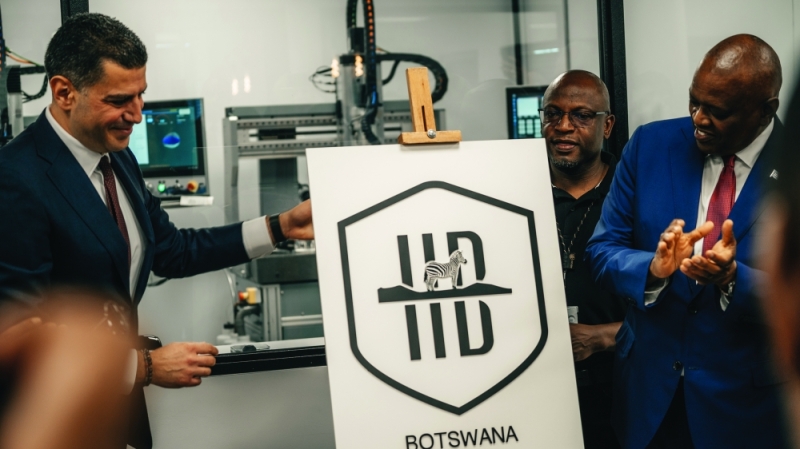Lucara exit throws HB, gov’t deal in limbo
Mbongeni Mguni | Monday October 2, 2023 06:00


Lucara, which represents HB Antwerp’s principal client, terminated its deal with the Belgian firm in the early hours of Thursday morning (local time) citing “a material breach of financial commitments” by HB. A few weeks ago, HB was rattled by a dispute between its founding shareholders over the strategic direction of the four-year old firm.
Masisi, who in March announced that government wanted to purchase a 24% stake in HB as a way of getting a foothold in the diamond value chain, struck a non-committal tone during a briefing yesterday.
“Lucara has said it has broken up its relationship with HB because of financial issues,” he said in response to Mmegi’s questions. 'It's for us to determine a course of action to take. “I will not get into that here, but I can assure you that we are going to participate in the value-added diamond space. 'No one is going to stop us and nothing will stop us.”
He added: “We had not signed with HB; there's no contract and it was an agreement in principle, just like we have an agreement in principle with De Beers.”
Government and De Beers reached a last minute agreement in principle on June 30 to extend their 54-year partnership, after five years of increasingly tense negotiations. The two partners agreed on a new 10-year sales agreement for Debswana’s rough diamond production through to 2033, and new 25-year Debswana mining licences through to 2054.
Under the new deal, State-owned diamond trader, Okavango Diamond Company (ODC) is due to get a 30% allocation of Debswana’s output, up from 25%, before this rises to a maximum of 50% in the next 10 years.
Masisi said government and De Beers’ were working on affirming the agreement in principle.
'We are due to sign with De Beers by the 30th (of September). Leave us to play our games and we will play them very well for you,' he said, alluding to the desire to conduct all diamonds talks away from the media gaze.
The termination of HB’s deal with Lucara casts a cloud on the deal the Belgian firm has been working on with government since at least March. Last November, HB signed a 10-year deal with Lucara under which stones from Karowe bigger than 10.8 carats are sold through HB at prices based on the estimated polished values, rather than the industry standard where traders purchase based on rough values. An earlier 24-month arrangement between HB and Lucara reportedly resulted in 40% higher diamond royalties to the Botswana government over the period.
Government had been hoping HB could emulate these results through an allocation of stones from the ODC.
Masisi said the proposed equity deal with HB was an attempt by government to move beyond simply being a miner of rough diamonds, a move that could open up opportunities for the country in the downstream diamond industry valued at $100 billion per annum.
“In the world of business, things happen,” the President told Mmegi at the briefing. “There was reported to be a difference within the (HB) board. “We know what’s going on and in that difference, there was also a change of leadership at Lucara and they brought back someone and they said they have broken up their relationship with HB because of financial issues.”
Lucara’s co-founder, Eira Thomas, left the CEO position last month and was replaced by William Lamb, who previously served in the position between May 2011 and February 2018. The move has been read as a resort to a familiar face from better days, as Lucara enters a financially tricky period associated with both the rough diamond industry downturn as well as escalating costs of its planned underground mine.
Analysts who spoke to Mmegi yesterday said with diamond prices and demand both sharply down this year, HB would have struggled with its commitments to both purchase Lucara’s rough and provide any form of mark-up to the producer.
Under the deal with Lucara, Karowe diamonds are sold to the Belgian firm at prices based on the estimated polished outcome of each diamond. According to HB Antwerp: “the projected polished price is determined using state-of-the-art scanning and planning technology and is then adjusted through top-up payments based on actual polished sales, less a fee, and the cost of manufacturing”.
Data shared this week by the ODC shows that since at least July last year, rough diamond prices have been rising higher than polished prices, due to an oversupply of diamonds, pressure from synthetics and the consumer backlash against the continued flow of sanctioned Russian diamonds into the market.
India, which cuts and polishes at least 80% of the world’s rough diamonds, this week announced a two-month ban on imports of rough diamonds in order to “better manage the balance between supply and demand”.
“Any diamond trader will find itself in trouble having to buy rough at increasingly higher prices, spending money cutting and polishing this, and then selling at a lower price,” a market insider told Mmegi yesterday afternoon. “It takes deep pockets to survive this period in the market. “ODC will survive because of government support, but HB is still a start-up and would have been struggling to support the model that underpins their agreement with Lucara.”
HB officials declined to comment on the latest developments.
